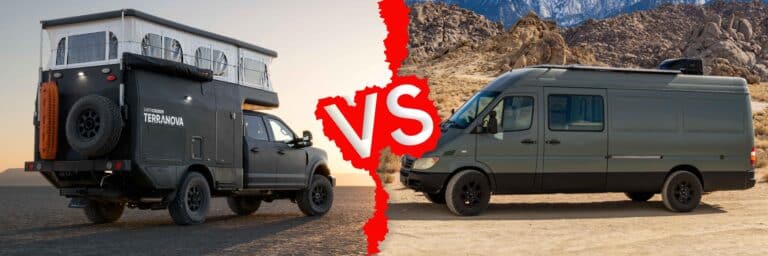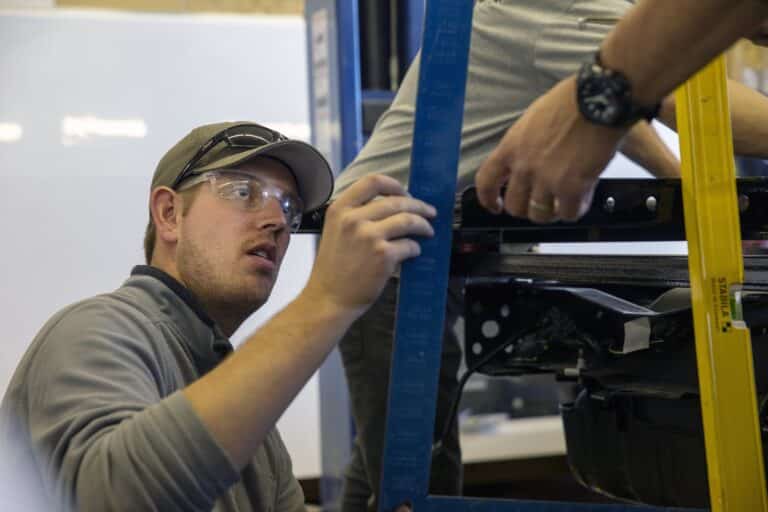Howard and Heidi Snell are beloved members of the EarthCruiser family and one of the earliest U.S. owners, securing #3 in the beginning days of EarthCruiser USA. Since then, they’ve moved on to their second EarthCruiser, which they put to good active use in the Western U.S. and Mexico. This past year has slowed their travels a bit, including group trips that they enjoy, but it hasn’t dampened their adventurous spirits which, as you’ll discover as we did, is something that has abounded in their relationship from the beginning. It is inspiring to hear their story and we are so grateful for their enthusiasm and support of the company and the community, always quick to lend a hand or some helpful advice to current and prospective owners. Thank you Snell’s for all you do!
Tell us about yourself
We both come from camping families which camped a lot when we were kids throughout the southwest. We met in 1969 during a high school conservation biology class and then married in 1975. We’ve always done a lot of hiking and camping together leading to our outdoor lifestyle.
We’ve lived in central New Mexico for 35 years since Howard began teaching biology at the University of New Mexico (UNM) and I (Heidi) worked as a graphic artist at Science Applications International. Currently I do fine arts, primary ceramics, painting and photography and Howard has retired from UNM.
Before moving to New Mexico we bounced around for several years after returning from the Galapagos Islands where we initially served as Peace Corps volunteers

shortly after we married. We lived and worked in the Galapagos for various periods from 1977 through 2004 – often with positions split between US institutions and the Charles Darwin Foundation. Our time in the islands was spent in research and implementation of a variety of conservation programs often with extended periods of time camping in remote field situations. My longest stint was nine months living in tents on a 24 acre island (Plaza Sur) studying land iguanas. Remote living is not new to us.
During a sabbatical leave from UNM we sailed our boat (Prima) to the Galapagos in 1993. Heidi was captain while Prima remained in the islands for the next 12 years. Prima was a mobile base for studies of ours, colleagues and graduate students (from Ecuador and the US). At one time we even had a portable X-ray machine on board!
Our original plan was to bring Prima back from South America and base her in the Sea of Cortez. However after years of tenuous anchorages and downwind rocky shores we realized that you can’t just lock the doors and walk away from your boat to go backpacking on shore. Someone either has to remain aboard or be nearby within sight of the boat in case an anchor drags or winds shift. We realized wanted to be free of those restrictions so we decided terrestrial travel gave us more freedom to explore.
What led you to look at EarthCruiser?
Ending up with an EarthCruiser has been a decades long progression. As a couple our first vehicle camping was based on a pair first generation Ford Broncos. Then we had a Volkswagen camper van for many years followed by a first-generation Toyota 4runner, a Tacoma pickup with a roof top tent. We briefly tried a tent trailer until an extremely windy weekend showed us why that wouldn’t work! Aside from the Volkswagen, all of those lacked mobile living space in really inclement weather. The EarthCruiser was our first self contained 4×4 vehicle.
We began researching expedition vehicles when EarthCruiser was starting in Australia. We corresponded with Lance in 2010 or 2011 asking about importing an Australian EC to the US and he told us of plans to begin production in the US.
What made you decide to invest in an EarthCruiser?

After several years looking at many different vehicles and briefly considering building our own, we saw our first EarthCruiser (from Australia) at Overland Expo in 2012. It belonged to a New Zealand couple traveling through North America. They were parked in the camping area at the event and were kind enough to give us a tour. We looked into the other main expedition vehicles as well. We found EarthRoamer and EarthCruiser to both offer quality construction and well thought out designs but for us EarthRoamers were too large, beyond our budget and unlikely to go the places an EarthCruiser could take us. We also looked at Global Expedition Vehicles, Sportsmobiles, Tiger Adventure Vehicles and XP Campers – all of which had many interesting features but just didn’t call to us.
Choosing EarthCruiser was a combination of quality construction, materials, and yacht-like design that was really attractive. Coming from experiences with ultralight sailboats, we’ve always thought they were better designed and constructed than RVs. When we saw the EarthCruiser we felt like we were in a sailboat with that kind of high-quality construction and design. Originally, we thought some aspects of our EarthCruiser’s interior layout would require modification but after our first year traveling with her the interior design was perfect.
We also really liked Michelle and Lance, who’ve become great friends. We had a lot of faith in them, as our first EC was US #3 there wasn’t much of a Stateside track record, but everything simply felt right. We first met in person in Bend in 2013, ordered our EC shortly thereafter and picked up Prima Terra in 2014. Just in time to join the first official EarthCruiser booth at Overland Expo. We’re now traveling in Prima Terra II. Both of our EarthCruisers have been EXP diesel models. That platform simply suites us best. Another aspect of the EarthCruiser company that we appreciate is a strong policy of creating opportunities for employees to grow within the organization. We like being customers of an organization that helps create opportunities for others.
What is a favorite feature?
The house was our original attraction but we immediately fell in love with the high visibility cab and elevated seating position where we can see everything. Sitting up in that cabin and driving through the backcountry is the best. We’ve driven 15 hours in one stretch and it was more comfortable than any other truck we’ve owned. Within various online forums you’ll find long rants about wasting money on expensive seats. But for as long as we sit on those seats, to be comfortable is premium.
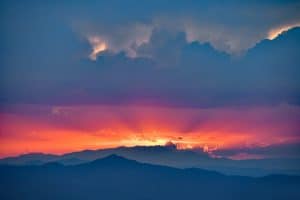
Another favorite feature of our EXP is the narrow windows at each end of the bed, we didn’t realize how much we’d love those when we first bought the EC but we now realize those windows are one of the neatest features. When we place Prima Terra II at any campsite we try to perch ourselves on a high ridge, hill or overlook and use our compass to position the EarthCruiser so we can watch sunrise from bed. Watching a sunrise with your head on the pillow is unparalleled. Plus, If it’s a hot night you just open those windows and get great cross ventilation.
We also really like our composting toilet. It greatly extends how long you can be remote. If you’re careful with how you manage the compost you can go about 3 weeks before you need to change it out. It’s possible to bury the compost, so no limit to dumping your black tank with a composting toilet. Other toilets found in expedition vehicles use water which can be the most limiting resource for many trips.
What’s something that might surprise someone looking at EarthCruiser for the first time?

When looking at the EXP, we hear a lot of questions from people that think they will be cold in the winter because of the vinyl windows and fabric upper walls but the diesel furnace is so effective and keeps the inside toasty. We love the many vinyl windows because it’s like being outside when inside and being outside is important to us.
How do you use your EarthCruiser?
Because we’re not fans of rainy trips we tend to love deserts and places it snows. We like to visit forests but aren’t drawn to them as we are to deserts. We like to see the horizon and mountains so dense trees make us slightly claustrophobic. With Covid we’ve not been out nearly as much but in previous years we’d spend about 70 to 100 nights out a year, sometimes more. We’d average at least 2-3 trips a month unless taking a long trip for several months. Our longest trip out was around four months.
We usually travel alone and often each do different things on a trip. Sometimes the EC acts as base for my photography while Howard will go on a packraft, backpacking or mountain bike trip. Often, we’ll meet up after a week or so and then wander about together to another area. One of our first long trips took us to the Wind River Mountains in Wyoming where Howard went climbing with friends to the Cirque of the Towers while I spent that week photographing wild horses across the rest of Wyoming driving Prima Terra into beautiful remote BLM areas.
The truck is easy to drive and I’m comfortable in the EarthCruiser on my own as Howard goes elsewhere. EarthCruisers can carry a lot – on one trip we had two mountain bikes, three packrafts, an inflatable kayak, backpacks for 3, climbing gear, photography gear plus all the usual stuff. We can play on water, land, or vertical cliffs.
What do you think is a way to know if an overlanding lifestyle is for you?
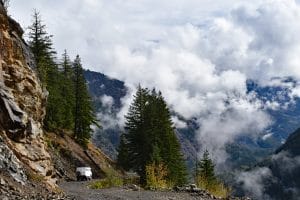
For us, it’s about being remote and isolated. We know not everyone seeks those conditions but that’s what we look for. We make the comparison to Verizon coverage maps with the red for coverage and the white for no coverage; we go to the white areas! We’ve found the same to be true with the iOverlander app – we’ll look for areas without reports when we’re deciding where to explore next. You have to be comfortable being remote.
There’s also a level of overlanding that’s remote but not isolated. You can be remote on the White Rim Trail around Moab but you’ll still see 5-6 cars every day, or camping with other people, so that’s remote but not isolated. Which is fine but not what we seek.
What advice do you have for people who are new to it?
We recommend starting as minimalist as you can. If you haven’t done backpacking, try it and see how little you can get by with. We moved from backpacking and tents into our EarthCruiser so the change was luxurious.
Some mistakes people might make when beginning overlanding is assuming an EarthCruiser is just like your regular home but “away.” A big expectation is that all the electrical appliances you might use at home can be run at the same time in your EC. Coming from sailboats we know how hard it is to generate electrical power and trying to run a microwave, toaster and coffee maker at the same time may be unreasonable.
When remote, water is really precious. A long shower every day is better suited for a RV park with hose hook-ups and access to dumping water, because that lifestyle shortens your time out when you’r
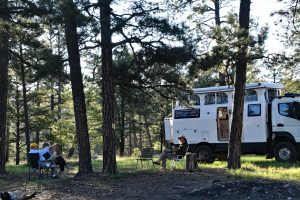
e overlanding. If you’re really out there and remote you have to keep in mind where you’re going to get your next water and what happens if it’s not there when you arrive.
We also recommend not watching off road racing vehicle videos and thinking that’s how to travel when overlanding. It’s nice to travel slow. It’s about the journey, going along and seeing the scenery, animals and beautiful things along the way. That’s better for the experiences and for the vehicle while being easier on everyone.
What are some tips you’ve learned?
With the EarthCruiser it’s entirely possible to carry food for months on end with the solar panels generating more than enough electricity to be remote for extended periods of time. We’ve learned that the main limit is water for being off grid. If we work at it we can get by on 2 ½ gallons a day, so with 60 gallons we can stay out without for nearly 25 days before resupply.
We’re picky about our water as where we live there is a lot of mineralization which clogs up systems and in many desert areas “wild” water is almost saline so we don’t put water from those sources in our tanks. When we fill up the tanks we either do it at a campground where we can taste the water before hand or on the road at those kiosk selling ice and filtered water. We place a collapsible bucket under the filtered water outlet, dump in several handfuls of quarters and draw the water into our tanks through a hose with a 12-volt pump. We prefer to keep the water going into the tanks clean rather than filter it out of the tanks. Mostly because that reduces the need to clean tanks.
(Editor note: The Snell’s have an older model without the current standard water filtration system)
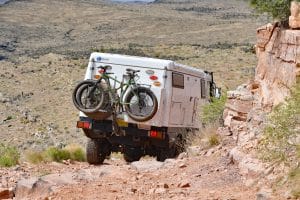
Winter camping can put a lot demand on the batteries – days are short, the sun is low and the need for electrical power can be high. Solar can provide enough power, even in winter, if there are enough panels, they are kept free of snow and ice, and an EarthCruiser is positioned for maximum sun exposure. We’ve almost never used the truck’s engine to generate electricity while camped because the solar has usually been plenty. We recommend initially putting as much solar on an EarthCruiser as possible – that’s easier than adding more later.
Learning about and understanding all of the vehicle’s systems and possible field repairs is a good idea before going out. Making repairs and recovering stuck vehicles are signs of experienced overlanders. Because breakdowns and stuck trucks make adventure – it’s important to be able to recover yourself.
We’ve also learned about navigating narrow roads or trails where it could be impossible to turn around or pass another vehicle. What we’ve done a lot on roads we don’t know, is walk or bike until we reach a point we could turn around and then we drive there and repeat, moving turn spot to turn spot. It’s not fast but we’re out there to hike and bike, not be in a hurry. Often we’ll sit and talk about the angle of the road, how exposed it is, how much tip we might have, and all those considerations so we’re in agreement before proceeding in situations that could be potentially dangerous. EarthCruisers have very low centers of gravity and it probably takes far more slant on a sidehill to tip over than either of us can tolerate.
Must have travel gear?
We carry a lot of recovery gear because we usually travel by ourselves. Being familiar with winching a big truck can make remote travel more enjoyable. Luckily for us, the first truck Howard had as a teenager had a winch which we used often. Since then we put winches on every four wheel drive we’ve owned. Winching is very comfortable to us. We’ve had to recover our EarthCruisers several times. Our second EC has both front and rear winches. We like the ability to recover and retreat as well as recover and advance. We’re more confident exploring really remote tracks with two winches because we know we can get out backwards if things get really bad. It is also very satisfying to help others who have become stuck in remote country.
We also travel with a Garmin InReach satellite communicator. Sometimes we take two when we know we’ll be out of cell coverage – that way we can communicate with each other via InReach to InReach texting. Most importantly we’ve finally found an espresso machine that fits in Prima Terra II and handles rough roads!
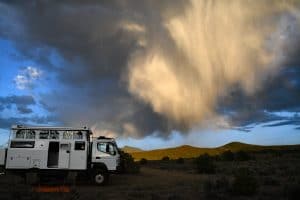
Tell us about a favorite trip in your EarthCruiser?
One of our favorite trips was about 8 weeks long with Rick and Julie Brake who own one of the first EarthCruisers (The Cocky) from Australia. They had her in the US for several years. We got together and took several weeks to cross New Mexico, drop into Mexico through Agua Prieta to Moctazuma then west to the Sea of Cortez, through Arizona where we crossed the Arizona Strip via 600 miles of dirt tracks to Nevada. In Nevada we circumventing Las Vegas via the Desert National Wildlife Refuge into the Spring Mountains and on to the Inyo Mountains of California. The biggest surprise of that trip was seeing an Gila Monster and a Black Bear at the same time!
Do you have any dream trips planned?
We’ve done a lot of international travel so aside from Australia, our big adventure international travel days are over. We would like to make an overland trip in Australia but the Covid situation put that on hold. At some point we’ll go through Canada, Alaska and into Mexico more. Chile and Argentina contain a lot of country that interest us and we like Latin American culture, but will probably primarily focus on Western US and Mexico. We tend to travel around the Southwest. We like exploring.
You’re active in the EarthCruiser Community. Tell us about that.
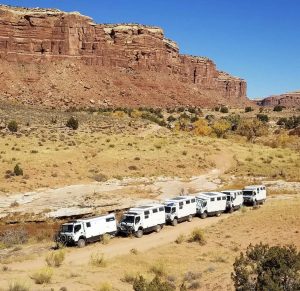
We’ve helped organize several EarthCruiser owner trips: Two in the North Rim of the Grand Canyon/Arizona Strip and two in Utah. A nice thing about those trips is sharing knowledge about things you learn and discover. On our most recent group trip, we went into the Bears Ears National Monument region of Utah. We organized it with Lance and Michelle. The trip was 18 days total divided into two legs of nine days each, so that was really fun and free form. Sometimes people didn’t caravan together and drive at different speeds to meet up at the campsites, which are coordinated by GPS. It’s fun to sit around the campfire at night and take hikes or mountain bike rides together.






